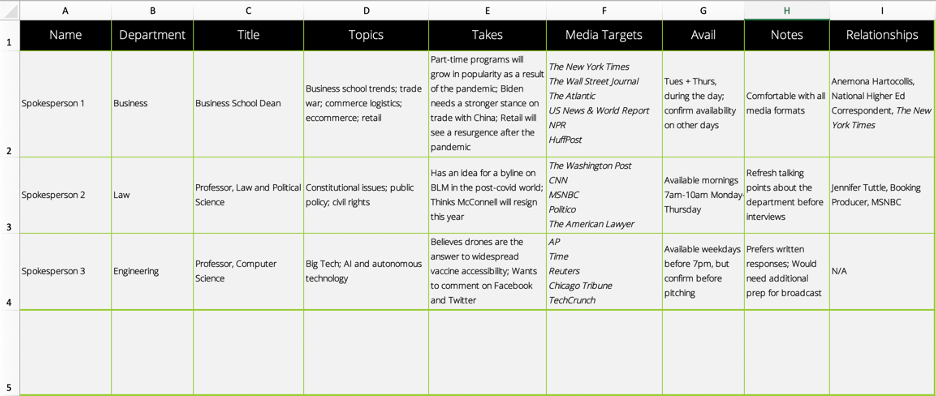Group Gordon’s Jacob Rodriguez outlines common faculty hang-ups about engaging in their school’s higher ed PR program and how to address them.
Earlier this month we hosted a webinar, A Faculty-Forward Approach to PR, focused on helping higher ed PR practitioners get faculty involved in the media effort. One of the most common challenges we discussed was overcoming faculty reluctance to participating in PR opportunities. Whether faculty members’ hang-ups come from not understanding the benefits, not wanting to make the time commitment, not feeling qualified, or not feeling confident speaking to media, there are clear, actionable steps you can take to address their concerns:
You can watch the full webinar here, but below are the key takeaways and helpful tips from the discussion about getting professors on board.
Most faculty will have personal or professional goals that participating in the PR effort can help them achieve. Your job is to figure out what those goals are and show them why the PR activities are worth their while. Is a professor looking to secure grants? Share some insights with them on how a targeted media effort can help them gain exposure among potential grantmakers. Are they looking for research partners or conference opportunities? Provide examples of how quality media coverage can translate into increased credibility, reach, and influence. Understanding their priorities is a key step in convincing professors to participate in the PR effort.
A quality higher ed PR program requires some time commitment from faculty spokespeople. But there’s a lot the communications team can take on to reduce the amount of time faculty must invest, including handling reporter outreach and follow-ups, monitoring for stories, and helping to write and edit contributed content. Demonstrating that you can take on a significant portion of the time commitment can go a long way in convincing a professor to take an extra interview or write another op-ed.
We often hear from faculty that they don’t think they’re the most qualified or authoritative person in their fields to speak with media. It’s important to help them understand that reporters are rarely looking for the expert on an issue. Usually, a reporter is looking for a few key things: someone who understands the topic they’re reporting on, has a point of view on it, and can clarify questions they or their readers may have – and, most important, who can speak on the record before their deadline. If a professor meets that criteria, then they are the perfect person for that opportunity. Helping professors understand this goes a long way towards securing buy-in for the higher ed PR effort.
There may be a wide range of topics your faculty member is knowledgeable on but a smaller subset they feel comfortable speaking to the press about. Focus on those topics, especially at the outset to ease them into the PR process. Professors may also have preferences about the medium. Some may prefer writing bylines or emailing quotes to reporters, while others may be more comfortable in a broadcast setting or on a call. By providing opportunities that align with their preferences, you’ll face less resistance. For the very media-shy, it may be worth considering formal media training to increase their confidence.
The steps outlined above provide actionable ways to address common concerns standing in the way of taking a faculty-forward approach to higher ed PR.
Did you find this guide helpful? Take it a step further and download our spokesperson framework (through the form on the linked page). This framework will help you keep track of faculty spokespeople so that you’re ready to nimbly respond to any media opportunity.
